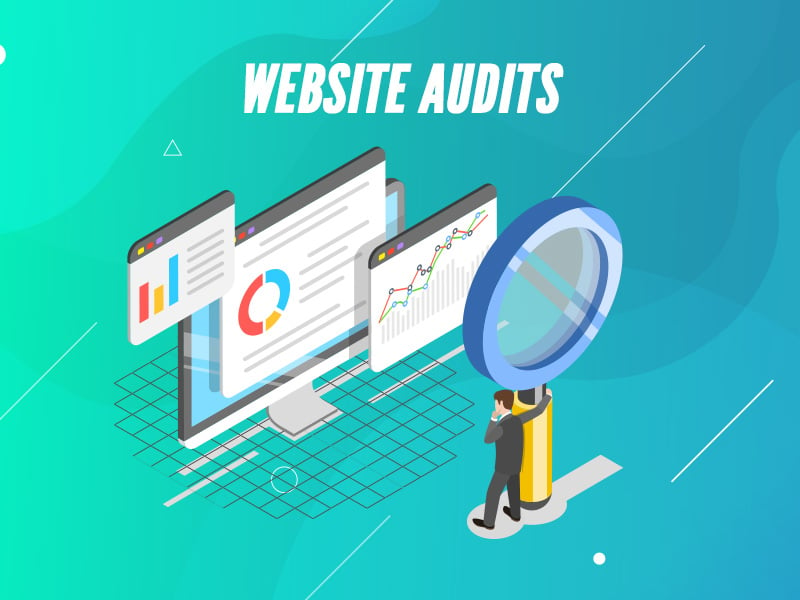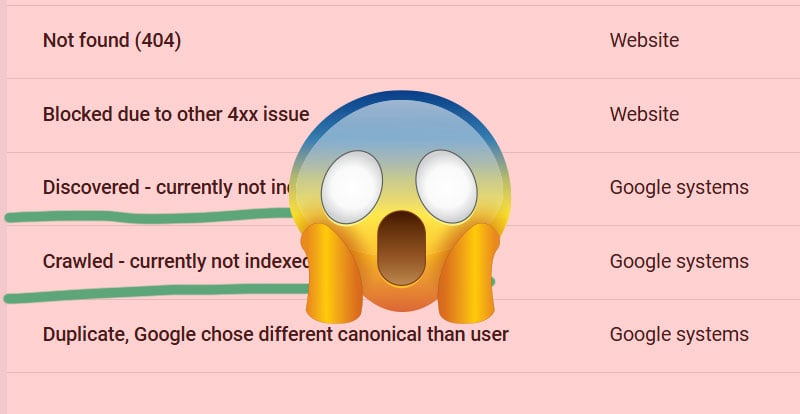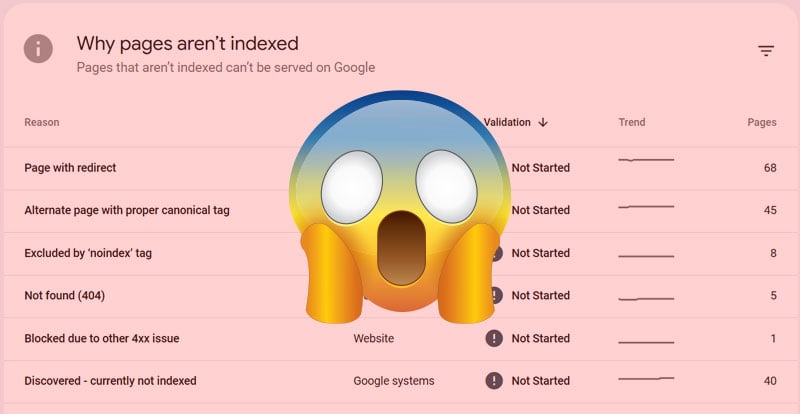As someone deeply immersed in the world of SEO, I understand the pulse-racing, stomach-sinking feeling that comes with noticing a drop in your website's traffic or search rankings. You've invested time, effort, and resources into cultivating a site that not only performs well but also stands out in the crowded digital landscape. The thought of seeing all that hard work lose ground is more than just worrying – it's downright scary.
In my own journey with SEO for this company, The 215 Guys, I've experienced the highs of seeing our website climb the ranks and the anxiety that comes with fluctuations. Each day, we strive to maintain our site's health, ensuring it remains robust and competitive. So, I can deeply empathize with the unease that comes when things don't go as planned. Whether it's a slight dip or a significant drop, it feels like a storm cloud over your digital presence.
But here's the thing: such moments are not just challenges; they're opportunities for growth and learning. In this article, I'll guide you through understanding why these drops happen and how to navigate your way back to solid ground.
We make some damn good websites.
Hit Us UpWebsite Audits - The Audits You Actually Want
You might be wondering, with a mix of curiosity and concern, 'What exactly is a website audit?' and why is a website audit important? Let me assure you, it's nothing as daunting as an IRS visit. Think of a website audit as a comprehensive health check-up for your digital presence. It's a crucial step, especially when you're gearing up to devise new strategies and campaigns.
This audit is your guiding light, offering a wealth of insights that prevent you from falling into repetitive errors. It's like having a map in hand while navigating the intricate landscape of your website. From the overall structure to the finer details of content, and even into the technical realms that often go unnoticed, an audit illuminates every corner. It's not just about identifying issues; it's about uncovering opportunities to enhance and refine your website’s performance.
At the heart of it, a website audit is not just a routine check-up; it's a strategic deep dive into the very elements that make your website a living, breathing entity in the digital ecosystem. Imagine this: each aspect of your site, from its SEO to the user experience, is a gear in a complex machine. A website audit ensures every gear is working in harmony, propelling your site towards its true potential.
Now, think about the tangible impact of regular audits. Statistics and case studies paint a compelling picture. Websites that undergo regular audits tend to outperform their counterparts in search rankings, user engagement, and conversion rates. It’s like finding a secret formula that constantly aligns your website with the best industry practices and the ever-changing algorithms of search engines.
You Want Organic Traffic, Right? Then You Want SEO
In the dynamic landscape of digital marketing, SEO stands as a beacon guiding traffic back to your website. While it's true that paying for ads can provide a quick surge in visitors, this article is focused on a more organic and sustainable approach. SEO isn't just about peppering your content with keywords; it's the backbone of how your website communicates with search engines and, by extension, with your potential audience.
If you're experiencing a dip in website traffic, it’s crucial to look at SEO as both the possible culprit and the solution. Often, these drops are linked to changes in search engine algorithms or mishaps in SEO practices. These changes can be subtle, like a shift in how search engines interpret content relevance, or more overt, like a new update that reshuffles the ranking criteria.
Important website audits:
These are the audits that we do for our clients when they come to us with a traffic problem. Normally, the problems are in combinations of all of these reports and I enjoy weaving them all together to create a story of issues and solutions.
SEO Audit
This audit assesses your website’s search engine optimization. It includes reviewing keyword relevance and usage, meta tags, URL structure, internal and external links, and content quality and relevance. The SEO audit also checks for compliance with the latest search engine algorithms.
Tools:
- Google Search Console: For tracking website performance in Google search results, identifying crawl errors, and understanding which keywords bring traffic.
- SEMrush or Ahrefs: Comprehensive SEO platforms for keyword research, backlink analysis, and competitor insights.
- Moz: Useful for on-page optimization, link building strategies, and site audits.
Methods:
- Analyze keyword rankings and their changes over time.
- Review on-page elements like title tags, meta descriptions, and header tags for optimization.
- Check for duplicate content and keyword cannibalization.
Technical SEO Audit
Focuses on the technical aspects that affect a website's SEO performance. It examines site speed, mobile responsiveness, XML sitemaps, broken links, crawl errors, HTTPS status, and indexing issues.
Tools:
- Screaming Frog SEO Spider: For crawling your website to identify technical issues like broken links, redirect chains, and page titles.
- Google PageSpeed Insights: To analyze the speed of your website and get recommendations for improvement.
- Mobile-Friendly Test Tool by Google: To check if your website is mobile-friendly.
Methods:
- Crawl the website to find 404 errors, broken links, and redirect issues.
- Analyze site loading speed and identify elements that slow it down.
- Check the website’s mobile responsiveness and usability.
Content Audit
A content audit evaluates the quality, relevance, and performance of the content on your site. It involves analyzing user engagement, content freshness, relevance to target audiences, and alignment with SEO best practices.
Tools:
- Google Analytics: For analyzing user engagement metrics like bounce rate, session duration, and page views.
- BuzzSumo: To understand content popularity and social sharing metrics.
Methods:
- Evaluate the performance of different content pieces in terms of engagement and traffic.
- Identify outdated or underperforming content for updates or removal.
- Assess content alignment with user intent and SEO goals.
User Experience (UX) Audit
This audit looks at how users interact with your website. Key areas of focus include site navigation, user interface design, call-to-action buttons, page loading times, and overall site usability.
Tools:
- Hotjar or Crazy Egg: For heatmaps, scroll maps, and user session recordings to understand user behavior.
- UserTesting.com: For getting direct feedback from users about their experience on your site.
Methods:
- Analyze heatmaps to see where users click, move, and scroll.
- Review user session recordings to identify points of friction or confusion.
- Conduct user surveys to gather feedback on the website's usability.
Backlink Audit
A backlink audit assesses the quality and quantity of external sites linking to your website. It helps identify potentially harmful links and opportunities to improve your backlink profile.
Tools:
- Ahrefs or Majestic: For comprehensive backlink analysis and identifying potentially harmful links.
- Google Search Console: To monitor the links pointing to your website.
Methods:
- Analyze the quality and relevance of backlinks.
- Identify and disavow toxic or spammy links.
- Assess the overall health of your backlink profile.
Competitive Analysis Audit
This involves analyzing your competitors’ websites to understand their strengths and weaknesses in terms of SEO, content, UX, and other areas. It can provide insights into industry best practices and new strategies to consider.
Tools:
- SEMrush or SpyFu: For competitive analysis and keyword insights.
- SimilarWeb: For traffic and engagement metrics comparison.
Methods:
- Compare SEO strategies, content, and backlink profiles with competitors.
- Analyze competitors' traffic sources and keywords.
- Identify gaps and opportunities in your SEO strategy.
Google Analytics Audit
Checking your Google Analytics setup can reveal insights into traffic patterns, user behavior, and potential technical issues impacting traffic. This audit ensures that data tracking and analysis are accurate and meaningful.
Tools:
- Google Analytics: The primary tool for analyzing traffic, user behavior, and conversions.
- Google Tag Manager: For tracking specific user interactions and ensuring accurate data collection.
Methods:
- Ensure proper setup of Google Analytics, including goals and event tracking.
- Analyze traffic sources, user behavior, and conversion paths.
- Identify any anomalies or unexpected changes in traffic patterns.





